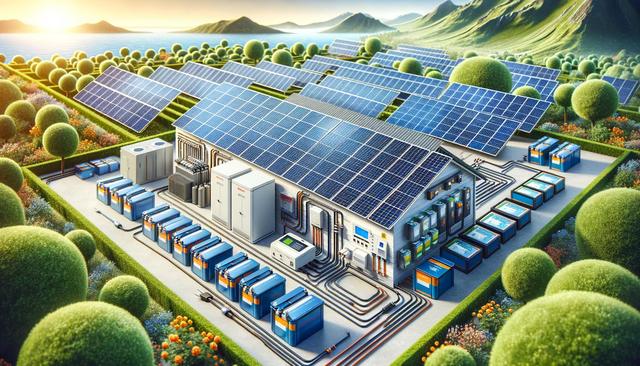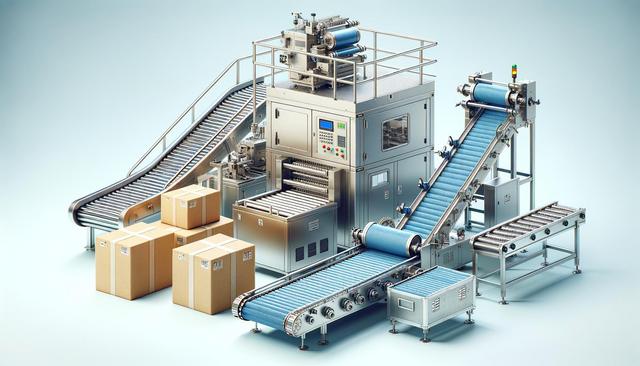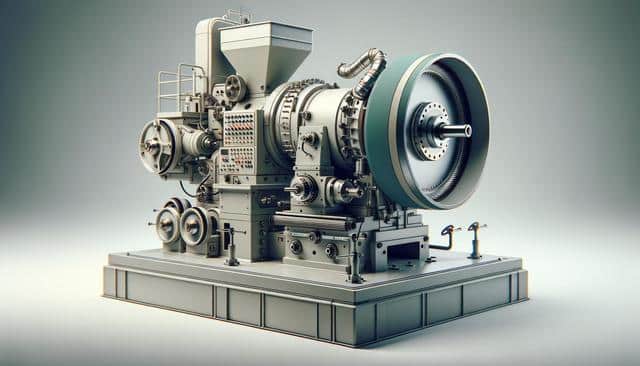
Grid-Tied Solar System with Battery Backup: Setup, Costs & Benefits
What Is a Grid-Tied Solar System with Battery Backup?
A grid-tied solar system with battery backup is a hybrid solar energy setup that combines the advantages of solar panels, battery storage, and grid connectivity. In this configuration, solar panels generate electricity that powers your home or business during the day. Excess energy is either stored in batteries for later use or sent back to the utility grid. The battery backup acts as a reserve, providing power during outages or when solar production is low. This system offers a balance between energy independence and reliability, making it a practical option for homeowners and commercial users alike.
Unlike off-grid systems, grid-tied setups remain connected to the utility grid, allowing for energy exchange. During the night or overcast days, when solar generation is insufficient, the grid supplies power. If your system produces more electricity than you consume, the surplus can be sent to the grid, often earning you credits through net metering programs. The battery backup ensures that you have access to stored power during emergencies or peak demand periods.
Key Components and How the System Works
Setting up a grid-tied solar system with battery backup involves several key components that work in harmony to ensure a reliable energy supply. These include:
- Solar Panels – Capture sunlight and convert it into electricity.
- Inverter – Converts the direct current (DC) electricity from solar panels into alternating current (AC) used by most appliances.
- Battery Storage – Stores excess electricity for later use, especially during outages or peak hours.
- Charge Controller – Manages the flow of electricity to and from the batteries to prevent overcharging.
- Grid Connection – Allows energy to flow between your system and the utility grid.
During daylight hours, solar panels generate electricity that powers your home and charges the battery. If production exceeds usage, surplus energy is sent to the grid. At night or during cloudy days, the system draws power from the battery or the grid, depending on availability and demand. This dual-source capability ensures consistent energy supply while optimizing the use of renewable energy.
Installation Process and Setup Considerations
The installation of a grid-tied solar system with battery backup requires careful planning and professional execution. The process typically begins with an energy audit to determine your consumption patterns and system size requirements. After that, solar panels are installed, followed by inverters and battery storage units. Electrical connections are then made to integrate the system with your existing power infrastructure and the utility grid.
Some key considerations during setup include:
- Roof orientation and shading – To maximize solar exposure, panels should be installed where they receive the most sunlight throughout the day.
- Battery capacity – The size of your battery should align with your energy usage and backup needs.
- Local regulations – Permits and net metering policies vary by region and must be addressed before installation.
- System monitoring – Many systems come with apps or dashboards that allow users to track performance and manage energy usage.
Professional installers usually handle all aspects of the setup, including system design, permitting, and interconnection with the utility. Proper setup ensures optimal performance and safety over the lifespan of the system.
Costs and Financial Considerations
Installing a grid-tied solar system with battery backup involves both upfront and long-term costs. The initial investment typically includes the cost of solar panels, inverters, batteries, installation labor, and permitting fees. Battery storage can significantly increase the total cost, depending on the capacity and technology used. However, several financial incentives can help offset these expenses, such as federal tax credits, state rebates, and utility-based incentives.
Key financial factors to consider include:
- Initial installation cost – Varies based on system size, battery type, and labor rates.
- Return on investment – Savings on utility bills and potential earnings from net metering contribute to long-term financial gains.
- Maintenance costs – While solar panels require minimal upkeep, batteries may need periodic inspection or replacement over time.
- Energy bill reduction – By reducing reliance on the grid, users can lower their monthly electricity costs.
Though the upfront costs may be substantial, many users find the long-term savings and increased energy security to be worthwhile. Additionally, as battery technology improves and prices continue to fall, these systems are becoming more financially accessible.
Benefits of a Grid-Tied Solar System with Battery Backup
One of the most notable advantages of this hybrid solar setup is energy reliability. With both solar and battery storage in place, users have access to power even during outages or periods of low solar production. The connection to the grid adds an extra layer of stability, ensuring that your energy needs are met at all times.
Other key benefits include:
- Reduced carbon footprint – Using solar energy decreases reliance on fossil fuels.
- Energy independence – Batteries provide backup power, reducing dependence on the grid.
- Grid support – Sending excess energy to the grid can contribute to overall grid stability and efficiency.
- Increased property value – Homes equipped with solar and battery systems often see improved market appeal.
These systems are particularly beneficial in areas prone to power outages or where electricity rates fluctuate. By combining solar production with battery backup and grid connectivity, users can enjoy greater control over their energy usage and costs.
Conclusion: Is a Grid-Tied Solar System with Battery Backup Right for You?
For homeowners and businesses looking to enhance energy reliability while reducing utility costs, a grid-tied solar system with battery backup presents a compelling solution. The setup offers a balanced approach to renewable energy by combining the continuous availability of the grid with the sustainability of solar power and the resilience of battery storage. While the upfront investment can be significant, the long-term benefits—both financial and environmental—make it a practical consideration for many energy-conscious users. Careful planning, professional installation, and an understanding of your energy needs can help you make the most of this innovative energy solution.


